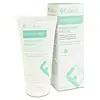What's inside
What's inside
 Key Ingredients
Key Ingredients

No key ingredients
 Benefits
Benefits

 Concerns
Concerns

 Ingredients Side-by-side
Ingredients Side-by-side

Water
Skin ConditioningCyclopentasiloxane
EmollientPersea Gratissima Oil
Skin ConditioningDimethicone
EmollientButylene Glycol
HumectantStearoxy Dimethicone
EmollientNiacinamide
SmoothingHexylene Glycol
EmulsifyingPolysorbate 80
EmulsifyingDimethicone/Vinyl Dimethicone Crosspolymer
Skin ConditioningPropanediol
SolventSodium Carbomer
Emulsion StabilisingSalicylic Acid
MaskingIris Florentina Root Extract
MaskingArctium Majus Root Extract
Skin ConditioningFructose
HumectantGlucose
HumectantSucrose
HumectantUrea
BufferingDextrin
AbsorbentAlanine
MaskingGlutamic Acid
HumectantAspartic Acid
MaskingBiotin
AntiseborrhoeicHexyl Nicotinate
EmollientGlycerin
HumectantDimethiconol
EmollientSilica
AbrasiveZinc Sulfate
AntimicrobialRetinyl Palmitate
Skin ConditioningAscorbyl Palmitate
AntioxidantSodium Acrylate/Sodium Acryloyldimethyl Taurate Copolymer
Emulsion StabilisingAcrylates/C10-30 Alkyl Acrylate Crosspolymer
Emulsion StabilisingIsohexadecane
EmollientAlcohol
AntimicrobialBenzyl Alcohol
PerfumingParfum
MaskingBHT
AntioxidantSodium Hydroxide
BufferingSorbic Acid
PreservativeLimonene
PerfumingLinalool
PerfumingCoumarin
PerfumingGeraniol
PerfumingCitral
PerfumingWater, Cyclopentasiloxane, Persea Gratissima Oil, Dimethicone, Butylene Glycol, Stearoxy Dimethicone, Niacinamide, Hexylene Glycol, Polysorbate 80, Dimethicone/Vinyl Dimethicone Crosspolymer, Propanediol, Sodium Carbomer, Salicylic Acid, Iris Florentina Root Extract, Arctium Majus Root Extract, Fructose, Glucose, Sucrose, Urea, Dextrin, Alanine, Glutamic Acid, Aspartic Acid, Biotin, Hexyl Nicotinate, Glycerin, Dimethiconol, Silica, Zinc Sulfate, Retinyl Palmitate, Ascorbyl Palmitate, Sodium Acrylate/Sodium Acryloyldimethyl Taurate Copolymer, Acrylates/C10-30 Alkyl Acrylate Crosspolymer, Isohexadecane, Alcohol, Benzyl Alcohol, Parfum, BHT, Sodium Hydroxide, Sorbic Acid, Limonene, Linalool, Coumarin, Geraniol, Citral
 Reviews
Reviews

Ingredients Explained
These ingredients are found in both products.
Ingredients higher up in an ingredient list are typically present in a larger amount.
Glycerin is already naturally found in your skin. It helps moisturize and protect your skin.
A study from 2016 found glycerin to be more effective as a humectant than AHAs and hyaluronic acid.
As a humectant, it helps the skin stay hydrated by pulling moisture to your skin. The low molecular weight of glycerin allows it to pull moisture into the deeper layers of your skin.
Hydrated skin improves your skin barrier; Your skin barrier helps protect against irritants and bacteria.
Glycerin has also been found to have antimicrobial and antiviral properties. Due to these properties, glycerin is often used in wound and burn treatments.
In cosmetics, glycerin is usually derived from plants such as soybean or palm. However, it can also be sourced from animals, such as tallow or animal fat.
This ingredient is organic, colorless, odorless, and non-toxic.
Glycerin is the name for this ingredient in American English. British English uses Glycerol/Glycerine.
Learn more about GlycerinWater. It's the most common cosmetic ingredient of all. You'll usually see it at the top of ingredient lists, meaning that it makes up the largest part of the product.
So why is it so popular? Water most often acts as a solvent - this means that it helps dissolve other ingredients into the formulation.
You'll also recognize water as that liquid we all need to stay alive. If you see this, drink a glass of water. Stay hydrated!
Learn more about Water